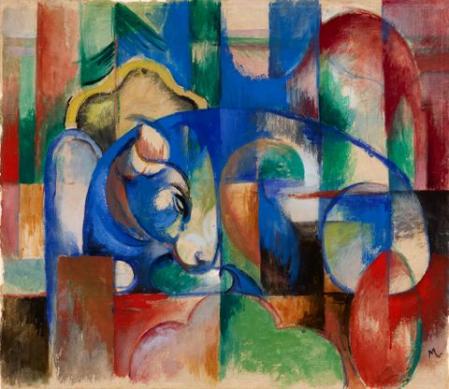EXPRESSIONISTS AT FOLKWANG
With Expressionists at Folkwang, Museum Folkwang is highlighting a particular focus of the museum collection on the occasion of its 100th anniversary in Essen that is closely interwoven with the history of the museum. On the basis of around 250 Expressionist masterpieces, the exhibition traces the manifold connections between artists and the museum and sheds light on the collection and exhibition activities surrounding this art movement from the beginning of the 20th century to the present day.
“It is a selectively beautiful collection, the likes of which are rarely seen.” With these words August Macke described his impressions of a visit to Museum Folkwang in Hagen in the summer of 1908. The museum was only a few years old at the time. Karl Ernst Osthaus had founded it in 1902 to “create a base for artistic life in the western industrial district”. The rapidly growing collection, but also the extensive exhibition programme, quickly made Museum Folkwang one of the most important art museums in Germany. Osthaus valued modern painting of the late 19th century and acquired works by Vincent van Gogh, Paul Gauguin, Ferdinand Hodler or Edvard Munch early on. But he was also very interested in current artistic developments. Expressionism played a significant role in this.
Osthaus was in contact with all the important centres of this revolutionary art movement, which spread rapidly, especially in German-speaking countries. He presented works by the artists’ group Brücke (Bridge) founded in Dresden in 1905 around Ernst Ludwig Kirchner, Erich Heckel and Karl Schmidt-Rottluff. But August Macke, Wassily Kandinsky, Alexej von Jawlensky, Gabriele Münter and Franz Marc of Der Blaue Reiter (The Blue Rider) in Munich were featured in exhibitions as well. The Viennese artists Oskar Kokoschka and Egon Schiele were able to present their novel images of the human being in Hagen in 1910 and 1912. And the first large travelling exhibition of the work of the young deceased painter Paula Modersohn-Becker started at Museum Folkwang in 1913.
Artists often sought contact with Osthaus, as word quickly spread about how open the museum and its founder were to the latest art. Franz Marc even felt a kindred spirit and wrote to Osthaus in 1911 that Museum Folkwang “is in its way already a model of our way of thinking”. There was also an intellectual proximity between Karl Ernst Osthaus and Ernst Gosebruch, who had been director of the municipal art museum in Essen since 1912. Gosebruch was fascinated by Expressionism and organised several exhibitions on Emil Nolde, from whom he also acquired paintings. When Osthaus died in the spring of 1921, it was not least thanks to Gosebruch’s initiative that the Osthaus collection was acquired for Essen a short time later and united with the municipal collection in 1922 to become the new Museum Folkwang in Essen.
The exhibition Expressionists at Folkwang traces this extraordinary history through masterpieces from Museum Folkwang and important European collections. It brings together works that were once shown in exhibitions in Hagen and Essen or were acquired for the collection. At the same time, Expressionists at Folkwang also tells the continuation of the story from the 1920s onwards. Ernst Ludwig Kirchner, for example, remained affiliated with the museum and from 1925 conceived a large-scale painting for the celebration hall in the new building of Museum Folkwang. The colourful sketches and paintings provide fascinating insights into the multilayered artistic process involved.
The period of National Socialism from 1933 onwards ended in disaster for the Expressionists as well as for the museum. Expressionism was not – as Emil Nolde hoped – declared to be the representative art of the new era, but on the contrary defamed as “degenerate”. The state confiscations from German museums in 1937 therefore mainly affected Expressionist art – and at Museum Folkwang, too, hardly any work was spared by the Nazi-induced confiscations. After the museum building was destroyed in the Second World War, the period after 1945 brought a new beginning in which the appreciation of Expressionism through exhibitions and acquisitions played a central role. As early as the late 1940s, the first Expressionist exhibitions were held again in temporary quarters in Essen. In 1958, the new museum building was symbolically opened with a large-scale retrospective of the Brücke artists. Through purchases, donations and endowments, an outstanding collection of Expressionist art grew again in the following decades at Museum Folkwang. In the centenary exhibition combined with works formerly belonging to Museum Folkwang, this collection provides a deep insight into the range and diversity of Expressionism and its history.
Main sponsor

Funded by

Share on






